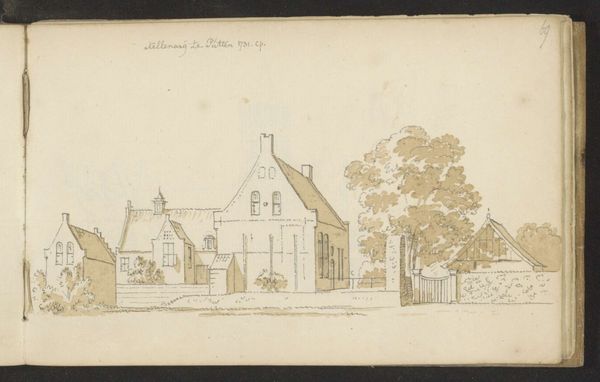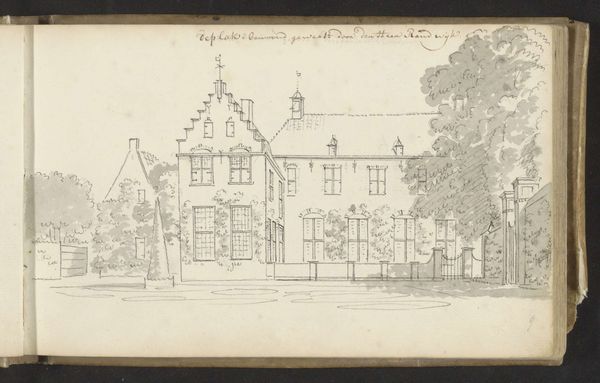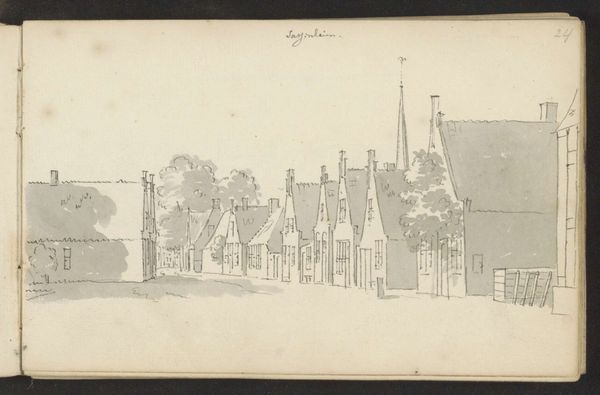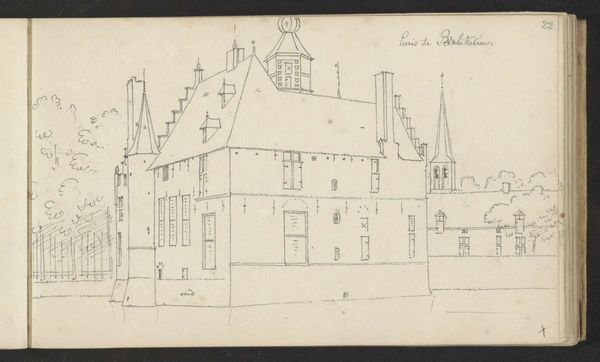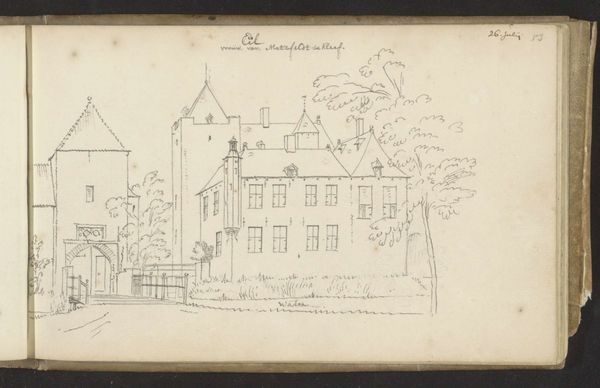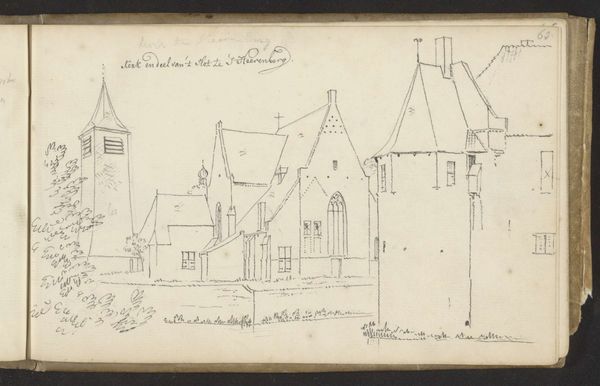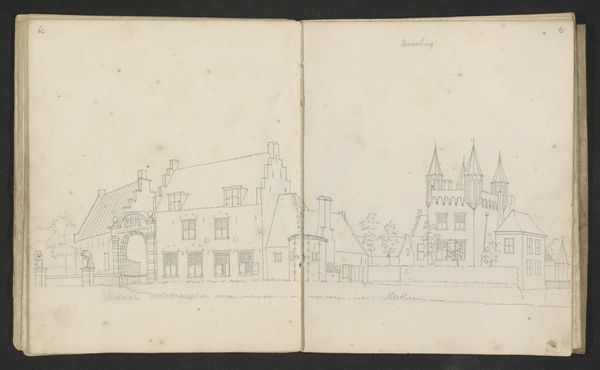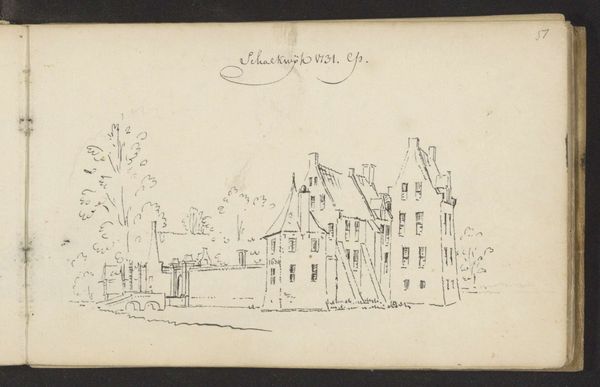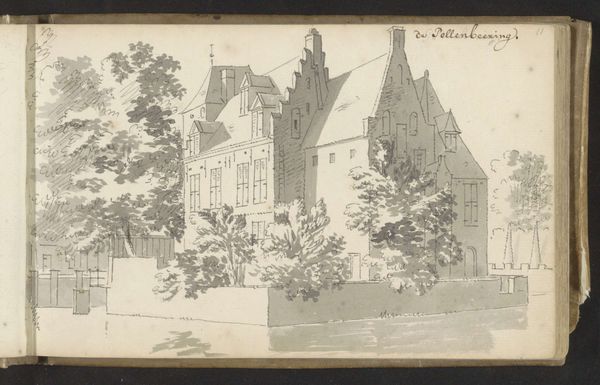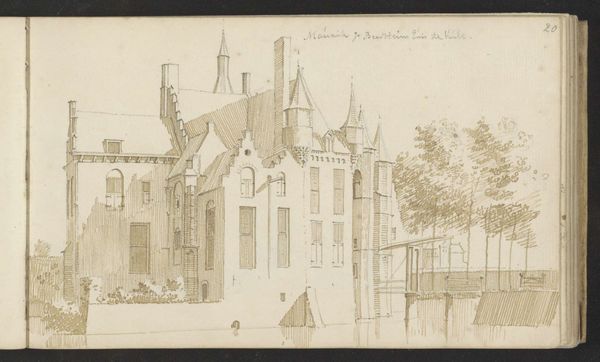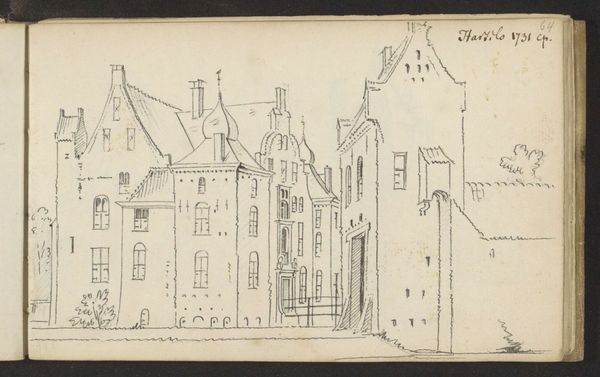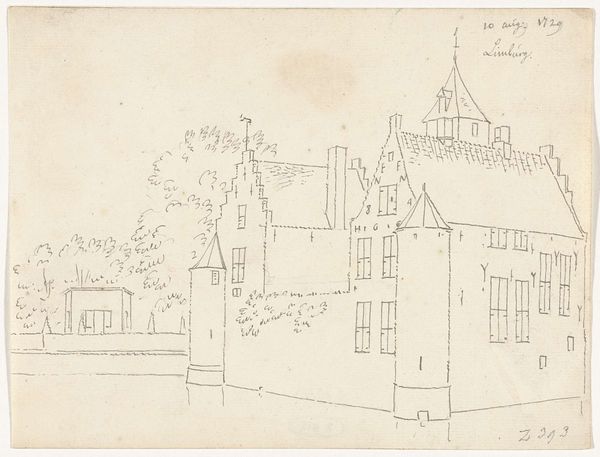
drawing, paper, ink
#
drawing
#
quirky sketch
#
dutch-golden-age
#
pen sketch
#
sketch book
#
landscape
#
paper
#
personal sketchbook
#
ink
#
sketchwork
#
pen-ink sketch
#
pen work
#
sketchbook drawing
#
cityscape
#
storyboard and sketchbook work
#
sketchbook art
Copyright: Rijks Museum: Open Domain
Curator: This delightful pen and ink sketch presents “Kasteel Kernhem te Ede,” drawn in 1731 by Abraham de Haen the Younger, part of the Rijksmuseum’s collection. Editor: Immediately, I'm struck by the somewhat rigid geometry. It's all sharp angles and straight lines, isn't it? Creates a sense of order, almost severe in its architectural portrayal. Curator: Indeed, yet its location is of significant value. We see it removed, on paper torn directly from the artist’s personal sketchbook, reminding us that these country estates existed in symbiosis with burgeoning urbanization. De Haen and his contemporaries were directly connected to an exploding commercial market and shifting modes of labor and land management that redefined Dutch society. Editor: You bring up a vital point about context, but even divorced from that, the interplay of line weights here commands attention. See how the artist modulates the ink to suggest depth and texture in the stone, a captivating semiotic device. It leads one to observe more carefully. Curator: Absolutely. But the sketchbook context reveals the artist’s labor. This isn't some finished, idealized landscape, but a raw, portable record. Consider the physical experience: the feel of paper, the scratching of quill against its surface, a direct connection to the artist’s own experience and the tools employed! Editor: While that tangible connection is undeniably important, doesn't it somewhat detract from analyzing how those material components coalesce to depict this singular architectural form, this isolated monumentality of lines against blankness? The lack of dramatic scale, combined with muted ink, renders the castle timelessly. Curator: The materials provide a window into 18th-century artistic practice, demonstrating accessibility. Ink and paper facilitated the mass production and consumption of images that fed into larger narratives of land ownership and social identity. Editor: True, and understanding those production modes deepens our appreciation. Curator: Exactly! Editor: Well, viewing De Haan’s landscape drawing through both material and structural lenses ultimately enriches our viewing experience. Curator: I agree; it seems to expand and ground our understanding simultaneously.
Comments
No comments
Be the first to comment and join the conversation on the ultimate creative platform.
